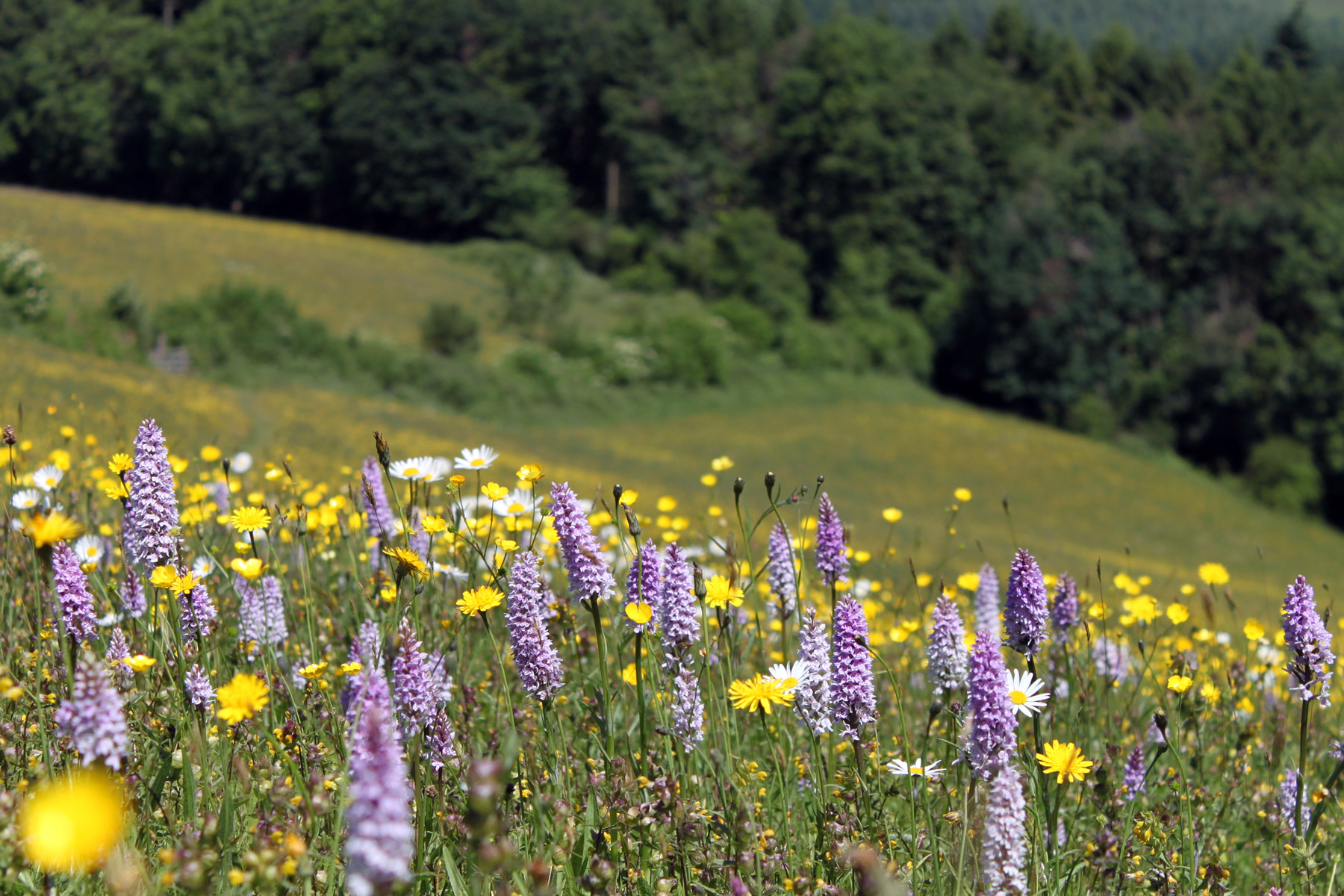Hilary Engel hosted a moth evening at Fair Oak Farm this May, for some neighbouring Herefordshire Meadows members and other enthusiasts in the Black Mountains. Below is their report of the evening’s findings, and some links to resources for those wanting to get started with moth trapping.
Moth Evening, Fair Oak Farm, May 2023
We set up three traps in the late afternoon. Two were sited in a field beside the Dulas Brook, which is a permanently damp, reedy field designated ‘species-rich grassland’ in our Stewardship agreement, lightly grazed by sheep.
Both used mercury vapour lamps powered from a huge caravan-style battery (a bit of a challenge to carry up and down the steep bank). The lamps were switched on at dusk and left on all night to attract the moths. One trap consisted of a purpose-made perspex container with a funnel opening, so the moths were drawn to the light and down the funnel. Empty egg cartons were provided inside the container for the moths to settle in.
The second field ‘trap’ consisted essentially of a white sheet with the lamp standing in the middle, and a few egg boxes around it. After dark the moths tended to settle for a while and could be photographed; but mostly they then flew away.
The third trap was set up on flagstones in our courtyard garden, surrounded by flowering shrubs and close to an ornamental pond. Its lamp was powered from the mains. The trap consisted of a wooden container, with egg boxes inside. The lamp was also switched on at dusk and switched off at first light, about 4 am. The lamp was then removed, and a white cloth thrown over the trap to prevent the moths from escaping. At breakfast time, in daylight, we returned to identify, record and photograph the moths before releasing them.
The field traps caught 21 species, and the garden trap 17 species as detailed below. Between them there were 24 different species. Highlights included a Puss Moth, a Silver Cloud (a Herefordshire speciality) and a Seraphim. All of the traps caught a lot of Cockchafers (May bugs).
Species found in field traps:
| Nut-tree Tussock |
| Brimstone Moth |
| Pale Tussock |
| Small Square-spot |
| Puss Moth |
| Iron Prominent |
| Pebble Prominent |
| Pale Prominent |
| Oak Hook-tip |
| Flame Shoulder |
| Least Black Arches |
| Flame Carpet |
| Waved Umber |
| Spectacle |
| Scalloped Hazel |
| Orange Footman |
| Treble Lines |
| Red Twin-spot Carpet |
| Buff-tip |
| Green Carpet |
| Clouded-bordered Brindle |
Species found in garden trap:
| Broken-barred Carpet |
| Brimstone Moth |
| Waved Umber |
| Flame Shoulder |
| Pebble Prominent |
| Iron Prominent |
| Oak Hook-tip |
| Flame Carpet |
| Spectacle |
| Least Black Arches |
| Scalloped Hazel |
| Buff-tip |
| Treble Lines |
| Orange Footman |
| Puss Moth |
| Silver Cloud |
| Seraphim |
There is a small moth group in Herefordshire, part of West Midlands Butterfly Conservation. For further information contact https://westmidlandsmoths.co.uk/help.php
For help with moth identification go to Butterfly Conservation https://butterfly-conservation.org/moths.
There is a useful video on YouTube: ‘How to make a moth trap’, made by Devon Wildlife Trust.
Recommended books:
Townsend, Martin & Waring, Paul, Field Guide to the Moths of Great Britain and Ireland, British Wildlife Publishing, ISBN 0 9531 399 2 1 (paperback)
Townsend, Martin & Waring, Paul, Concise Guide to the Moths of Great Britain and Ireland, British Wildlife Publishing, ISBN 978 0 9531 399 6 5
Simpson, Tony, Duncan, Ian & Williams, Mike, Moths of the West Midlands, Pisces Publishing 2020, ISBN 978 1 874357 92 6



